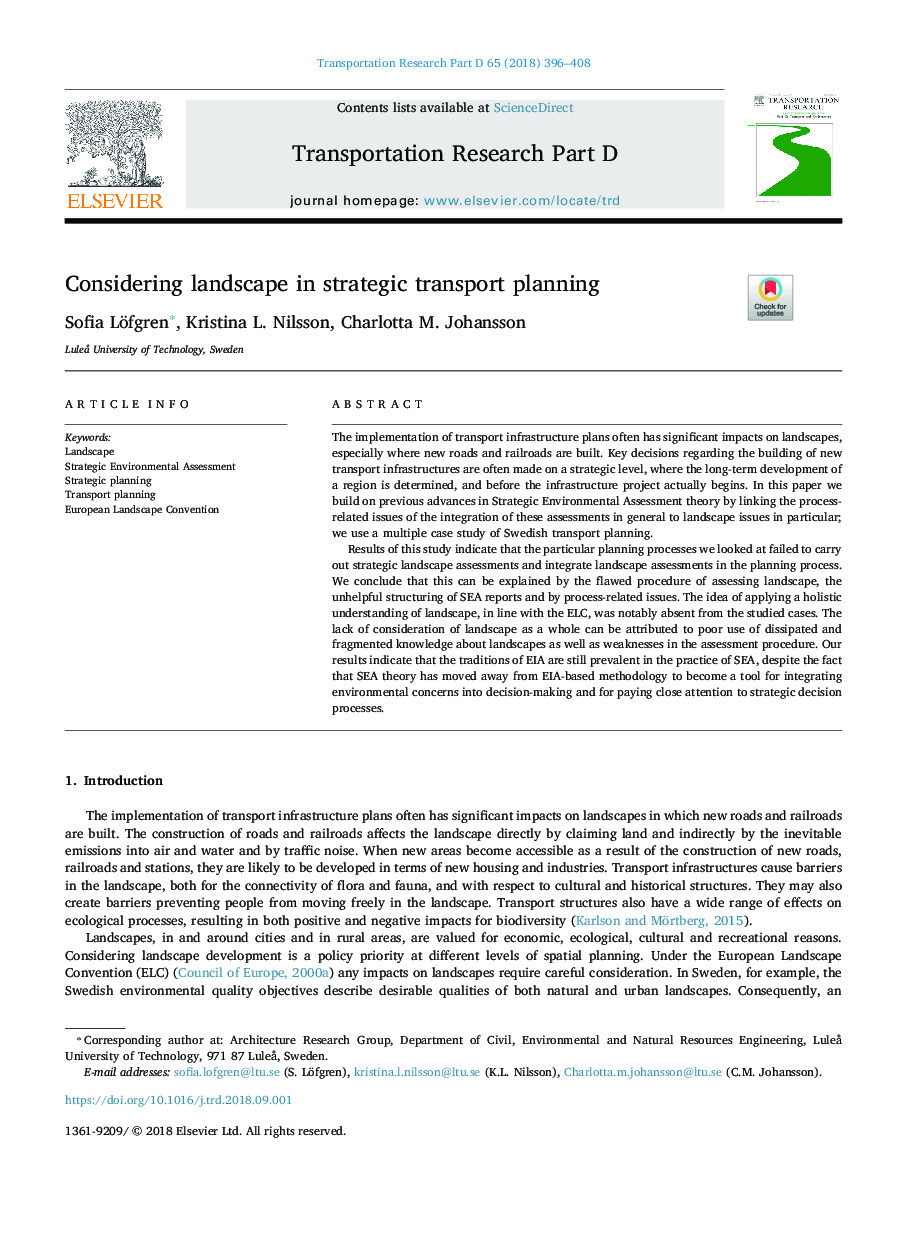| Article ID | Journal | Published Year | Pages | File Type |
|---|---|---|---|---|
| 11005444 | Transportation Research Part D: Transport and Environment | 2018 | 13 Pages |
Abstract
Results of this study indicate that the particular planning processes we looked at failed to carry out strategic landscape assessments and integrate landscape assessments in the planning process. We conclude that this can be explained by the flawed procedure of assessing landscape, the unhelpful structuring of SEA reports and by process-related issues. The idea of applying a holistic understanding of landscape, in line with the ELC, was notably absent from the studied cases. The lack of consideration of landscape as a whole can be attributed to poor use of dissipated and fragmented knowledge about landscapes as well as weaknesses in the assessment procedure. Our results indicate that the traditions of EIA are still prevalent in the practice of SEA, despite the fact that SEA theory has moved away from EIA-based methodology to become a tool for integrating environmental concerns into decision-making and for paying close attention to strategic decision processes.
Keywords
Related Topics
Life Sciences
Environmental Science
Environmental Science (General)
Authors
Sofia Löfgren, Kristina L. Nilsson, Charlotta M. Johansson,
